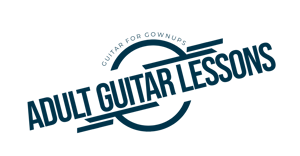As a general rule, playing guitar can be broken down into two broad categories – lead guitar and rhythm guitar.
Each of these categories is approached from a unique perspective and mindset, requiring different skills and techniques.
Lead guitar is the art of musical expression through soloing – playing riffs, licks and runs over the rhythmic foundation of a song.
Rhythm guitar is the art of playing the foundational structure of a song through the use of guitar “chords”.
Typically, the beginning guitarist will learn how to play rhythm guitar chords before moving on the intricacies of playing lead guitar.
A guitar chord is a series of notes that are played simultaneously. The notes for a particular chord are determined by the “steps” in the scale that relates to the chord that is to be played.
The specific notes for many chords are stated in terms of a “triad”, or three notes that form the chord.
For example, a “major” chord triad is formed using the 1st, 3rd and 5th steps of the major scale that corresponds to the chord being played.
To illustrate, a “C” major chord triad is derived from the 1st, 3rd and 5th steps of the “C” major scale by simply assigning a number to each step in the scale sequentially, as follows:
C=(1), D=(2), E=(3), F=(4), G=(5), A=(6), B=(7), C=(8)
Using the above example, in order to determine the notes for the C major chord triad, you would take the 1st, 3rd and 5th notes in the scale, and conclude that the C major triad consists of the notes C, E and G.
The same method can be used to determine the chord triad for other chords as well, such as minor, major 7th, augmented and diminished chords etc. The only difference is that the “steps” or intervals will vary.
For example, a minor chord triad is “spelled” using the 1st, flat 3rd and 5th steps of the major scale. So a C minor chord triad (using the above illustration) would be formed with the notes C, E flat, and G.
Although from a technical standpoint, learning how chords are put together in terms of step intervals and triads is useful – actually mastering and grasping the concept can be a challenge requiring years of study.
From a practical point of view, learning how to play guitar chords can be more quickly accomplished by visualizing the “patterns” of the chord formations.
Chord diagrams are a great way of doing this. Try looking at a chord diagram of an open “E” chord, for example, and visualize the pattern of the “dots” indicating finger placement.
Work on memorizing that pattern so that you can recall it without referring back to the diagram.
In this way you can instantly know how to play an “E” chord without having to be concerned with determining the major triad or interval steps that comprise it.
In the early days, playing guitar may seem foreign and complicated – but by utilizing the art of “visualization” and recognizing certain “patterns” that repeat themselves consistently – you will quickly come to realize that it may be much easier than you thought!



